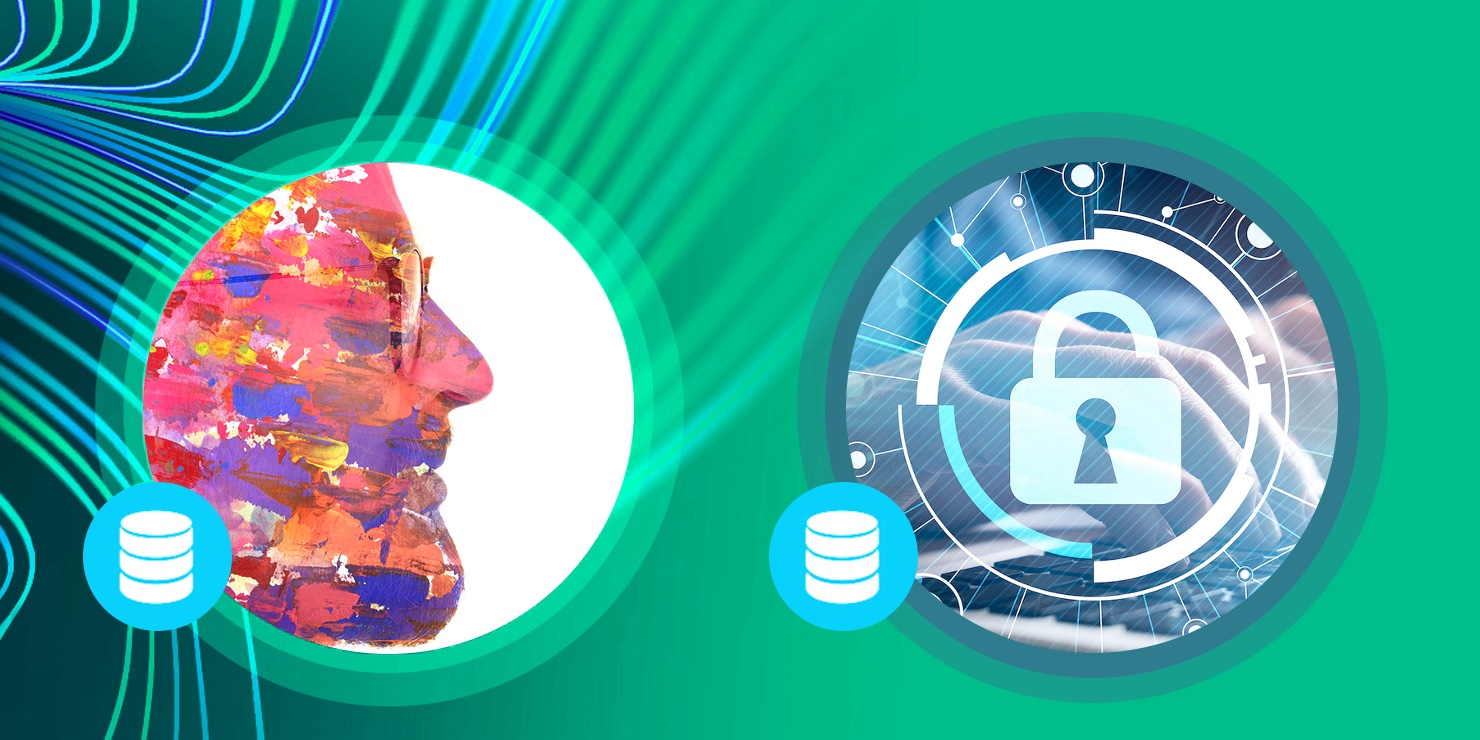Data anonymization and encryption are 2 separate approaches to protecting personal information and complying with data privacy laws, like GDPR and CPRA.
Table of Contents
What is Data Anonymization?What is Data Encryption?Data Anonymization Techniques
Data Encryption Techniques
Data Anonymization vs Encryption: What’s The Difference?
Data Anonymization Use Cases
Data Encryption Use Cases
Which Approach is Best for Your Company?
What is Data Anonymization?
Data anonymization removes Personally Identifiable Information (PII) from a dataset, making it very difficult or impossible to link the data to an individual or organization. It works by replacing identifiable data fields with non-identifiable data fields. For example, a Social Security Number can be replaced with a random set of numbers.
It’s particularly important when sensitive data, such as medical, financial, or personal information, is involved because it gives organizations the ability to use data for necessary business functions while protecting the privacy of the individual.
Data anonymization is a blanket term that includes multiple techniques, such as data masking, data randomization, data generalization, pseudonymization, and data swapping.
What is Data Encryption?
Encryption is a powerful technique that transforms data into a format that can only be understood by those who possess the right key or password. It provides an extra layer of security for sensitive information like bank account numbers, passwords, etc. Additionally, encryption can be used to protect valuable assets like intellectual property, trade secrets, and other confidential information that needs to be kept private.
Encryption is often used when data needs to be protected from unauthorized access during transmission or storage. Algorithms convert the original data into a coded form that can only be understood by authorized parties with the decryption key. When data is encrypted, it becomes unreadable unless you have the correct key or password to decrypt it.
For this reason, encryption is often used to keep data secure while it's at rest (stored) or in motion (being sent over a network). For example, encryption is often used to protect credit card information that is shared during online transactions.
Data Anonymization Techniques
There are many different data anonymization techniques that can be used, depending on the needs of the organization:
-
Data generalization involves reducing the granularity of data by aggregating it into larger categories. For example, a business may group age data into age ranges, rather than recording everyone’s exact age.
-
Data masking involves partially obscuring data to make it less identifiable.
-
Pseudonymization replaces PII such as names, addresses, and dates of birth with a unique identifier or code.
-
Data swapping works by replacing actual data values with fictitious, but similar, ones. For example, a real name or phone number could be substituted with a made-up one.
When choosing a data anonymization technique, organizations must consider the trade-off between usefulness and privacy. Heavily anonymized data may be less useful for analysis and decision-making. However, if personal data is not sufficiently anonymized, it could be used to identify individuals and compromise their privacy.
Enterprises should choose the appropriate anonymization method based on the sensitivity of the data and the risk of re-identification. For example, masking data may be appropriate for less sensitive information, while swapping may be necessary for highly confidential data.
Data Encryption Techniques
There are 2 main data encryption techniques used to protect personal or sensitive information:
Symmetric encryption, also known as shared-secret encryption, uses the same secret key to both encrypt and decrypt information. It’s often used for data transmission between 2 parties who know and trust each other.
Asymmetric encryption, also known as public-key encryption, uses a pair of keys: a public key and a private key. The public key is used to encrypt data, and anyone can access it, while the private key is used to decrypt data, and only the intended recipient possesses it.
Asymmetric encryption is widely used for secure communication over the Internet, such as in online banking and e-commerce transactions, because it allows for secure data transmission between 2 parties who do not necessarily know or trust each other.
Additionally, asymmetric encryption is often used for digital signatures, where the private key is used to create a signature that can only be verified by the corresponding public key, thus ensuring the authenticity and integrity of the data.
Data Anonymization vs Encryption: What’s The Difference?
Data anonymization and encryption both enable enterprises to protect personal information and comply with data privacy standards such as the General Data Protection Regulation (GDPR) and the California Privacy Rights Act (CPRA).
The main difference between them is in the level of protection they offer, and how they achieve that protection. The anonymization of data provides a high level of privacy protection because the data is completely anonymous. Encryption provides a high level of security because the data is transformed into an unreadable format.
Data anonymization tools remove personal information from the dataset, altering the data itself in order to protect individual users from being identified. This makes the identification of an individual in a dataset highly unlikely, or impossible, but it may also reduce the utility of the data by modifying or removing important PII elements.
Encryption, on the other hand, does not alter the data itself but instead transforms it into an unreadable format that can only be decrypted with the proper key. Encryption is typically used to protect sensitive data in transit or at rest. By removing identifying information, the data can still be used for research or analysis without compromising the privacy of the individuals involved.
Data Anonymization Use Cases
Anonymization is best suited for data sharing with third parties, while also protecting the privacy of the individuals involved. For example, it’s commonly used for research studies and surveys, or when sharing medical records or financial reports.
Data anonymization is often the best choice to use when a company:
-
Needs to share sensitive data with third parties while protecting the privacy of individuals
-
No longer requires personal data for its original purpose, but still needs to retain and use it for other purposes
-
Wants to minimize the risk of re-identification of individuals within the dataset
-
Conducts data analysis or research that requires large-scale datasets while safeguarding privacy
Data Encryption Use Cases
Data that has been encrypted is unreadable, unless decrypted with an encryption key. It’s nearly impossible to hack data that’s been encrypted, but this level of protection often results in reduced functionality. Given its drawbacks, encryption is most often used to secure unstructured data at rest, or to protect data as it’s being transferred between networks. It’s also one of the best choices for safeguarding data found in files, videos, and images.
Data encryption is often the best choice for an organization that:
-
Needs to protect data from unauthorized access during transmission or storage
-
Transmits sensitive data over open networks, such as during credit card payments over the Internet
-
Wishes to securely store data in databases or other storage systems to help prevent unauthorized access
Which Approach is Best for Your Company?
Data anonymization and encryption are not mutually exclusive. Organizations can, and should, use a combination of both approaches to protect personal or sensitive data.
In order to protect data privacy while still maintaining business functionality, many enterprises are now turning to entity-based data masking technology, where each business entity (customer, device or order) is maintained in its own individually encrypted Micro-Database™.
With the ability to anonymize or encrypt individual data quickly and efficiently, enterprises can access a single business entity’s data whenever they need it, without having to conduct large-scale queries of massive databases. It allows enterprises to optimize their data protection strategy according to each individual business entity, which maximizes the usefulness of data while ensuring the highest levels of protection.















